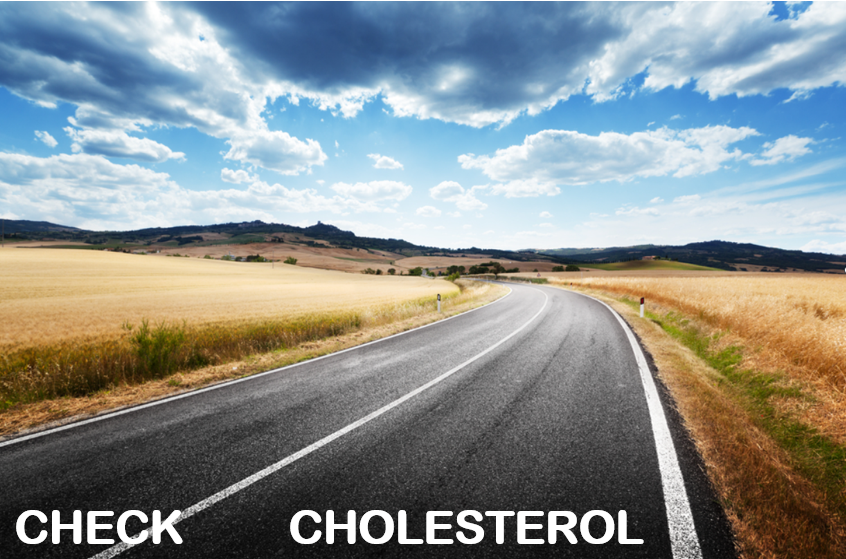Cholesterol 101: Keep Your Heart Happy by Knowing Your Numbers
Hey Heart-Health Friends! Ever wonder what that “cholesterol” buzzword is all about? Picture your arteries as highways for blood flow—cholesterol can either keep traffic moving smoothly or cause some pesky roadblocks. Monitoring your cholesterol is like checking your car’s oil—it helps your heart run like a dream! Whether you’re grabbing a burger or munching on those heart-loving berries, understanding cholesterol can make all the difference. Ready to get the lowdown on what cholesterol does, why it matters, and how to keep it in check? Let’s dive into this heart-smart guide!
What Is Cholesterol, Anyway?
Cholesterol is a waxy, fat-like substance in your blood, and your body needs it to build cells, make hormones, and keep things running. But like guests at a party, too much cholesterol can crash the vibe. Here’s the breakdown:
Good Cholesterol (HDL): Think of HDL as the cleanup crew, scooping up excess cholesterol and shuttling it to your liver for a safe exit. Higher HDL is your heart’s BFF!
Bad Cholesterol (LDL): LDL is the party crasher, piling up in your arteries and forming plaques that can slow blood flow or cause blockages. Too much LDL raises heart disease risk.
Triglycerides: These are another type of fat in your blood, often high from sugary foods or extra calories. High triglycerides plus low HDL can spell trouble for your ticker.
Your liver makes all the cholesterol you need, but foods like burgers or bacon (yep, those heartbreakers we talked about!) can add more. The goal? Keep LDL low, HDL high, and triglycerides in check for a heart that hums along happily.
Why Monitoring Cholesterol Matters
Checking your cholesterol is like getting a report card for your heart. High LDL or triglycerides can quietly build up plaque in your arteries, increasing the risk of heart disease, heart attacks, or strokes—sometimes without obvious symptoms. Remember those body signs we mentioned, like yellowish eyelid patches? They can hint at high cholesterol, but a blood test is the real MVP for catching it early.
A simple lipid panel (a blood test) measures your total cholesterol, HDL, LDL, and triglycerides. Most adults should check every 4–6 years, but if you have a family history of heart disease, diabetes, or lifestyle factors like smoking (nod to your Quit Smoking Hub!), you might need it more often. Knowing your numbers empowers you to make heart-smart choices—like swapping fries for a quinoa salad or taking a brisk walk.
5 Heart-Smart Tips to Manage Cholesterol
No need to stress—small changes can keep your cholesterol in the green zone. Here’s how to love your heart every day:
Eat Heart-Happy Foods
Load up on foods that cheer for your heart, like those antioxidant-packed berries, oats, nuts, and fatty fish (hello, salmon!). These boost HDL and lower LDL. Skip the processed meats and fried snacks from our “heartbreakers” list—your arteries will thank you! Pro Tip: Try our heart-healthy lunch ideas, like avocado sandwiches or energy balls, for tasty, cholesterol-friendly meals.Get Moving
Exercise is like a turbo boost for HDL and a brake on LDL. Aim for 30 minutes most days—think walking with a podcast, dancing to your favorite tunes, or stair climbing from our “Keep Moving” guide. Even a 10-minute boogie session counts! Heart Perk: Regular movement can lower triglycerides and improve blood flow.Ditch the Smoke
If you’re on your quit-smoking journey (we’re rooting for you!), know that quitting boosts HDL and reduces heart strain. Check out your Quit Smoking Hub for tips to kick the habit and keep your cholesterol in check. Pro Tip: Pair quitting with our breathing exercises to manage stress and support your heart.Manage Stress
Chronic stress can raise LDL and triglycerides, so give your heart a break with yoga, deep breathing, or a cozy chat with friends from our “Keep Moving” post. Fun Twist: Try our diaphragmatic breathing while sipping herbal tea for a double dose of calm.Check Your Numbers
Get a lipid panel to know your cholesterol levels—think of it as taking our “Ultimate Heart Test” quiz in real life! Talk to your doctor about your results and any lifestyle tweaks or meds (like statins) if needed. Pro Tip: Track your progress with a journal or app to celebrate wins, like lower LDL after a month of berry-packed smoothies.
A Quick Cholesterol Cheat Sheet
Ideal Numbers (per American Heart Association):
Total Cholesterol: Under 200 mg/dL
HDL: 60 mg/dL or higher (higher is better!)
LDL: Under 100 mg/dL
Triglycerides: Under 150 mg/dL
When to Test: Every 4–6 years for adults, more often if you have risk factors like family history, diabetes, or smoking.
Who’s at Risk: Anyone can have high cholesterol, but smoking, poor diet, inactivity, or genetics (like familial hypercholesterolemia) up the odds.
Not sure where you stand? Take our “Ultimate Heart Test” quiz to gauge your heart health and get personalized tips—it’s a fun way to start your cholesterol journey!
Keep Your Heart in the Driver’s Seat
Monitoring your cholesterol is like giving your heart a roadmap to stay strong and healthy. With smart eats, fun moves, and a little know-how, you can keep those arteries clear and your ticker thriving. Pair these tips with our heart-healthy recipes, like oat bars or quinoa salads, and you’re set for a heart that sings! Noticed a body sign like puffy ankles or just curious about your numbers? Chat with your doctor to stay ahead of the game.

Cholesterol & Your Heart: Know the Facts to Stay Healthy!
Did you know? Cardiovascular disease (CVD) affects millions, with 20.5M lives lost yearly—that’s 1 in 3 deaths globally! Over 85% of these are linked to atherosclerotic cardiovascular diseases (ASCVD), often tied to cholesterol buildup. Let’s protect our hearts with small, smart choices—think more salmon, less bacon! 💖 #HeartHealth #CVDawareness
